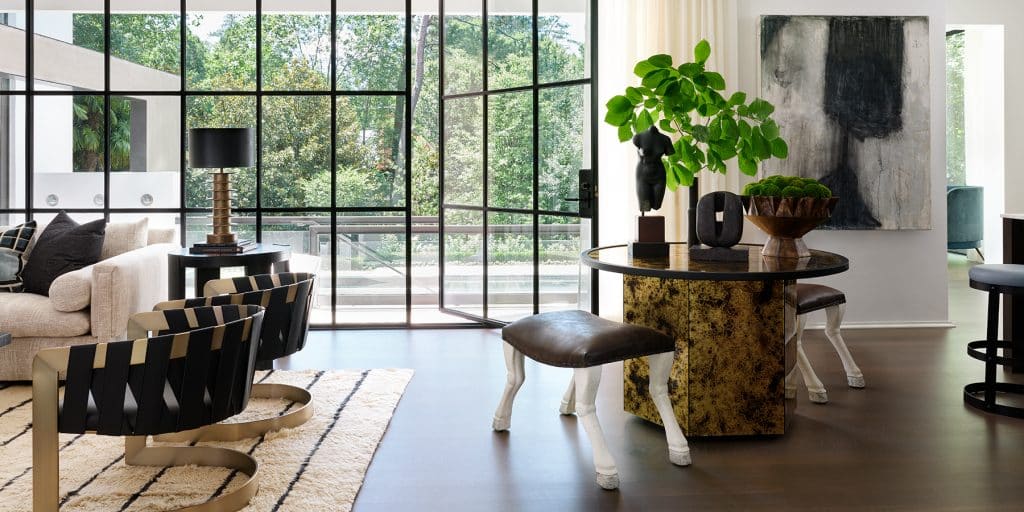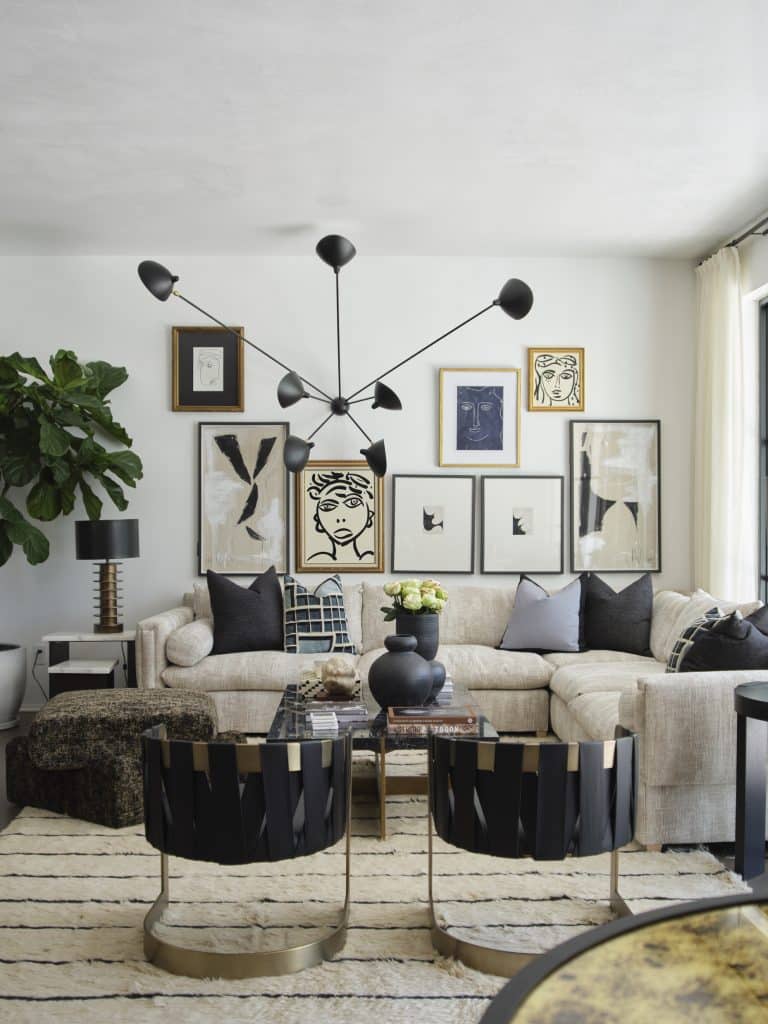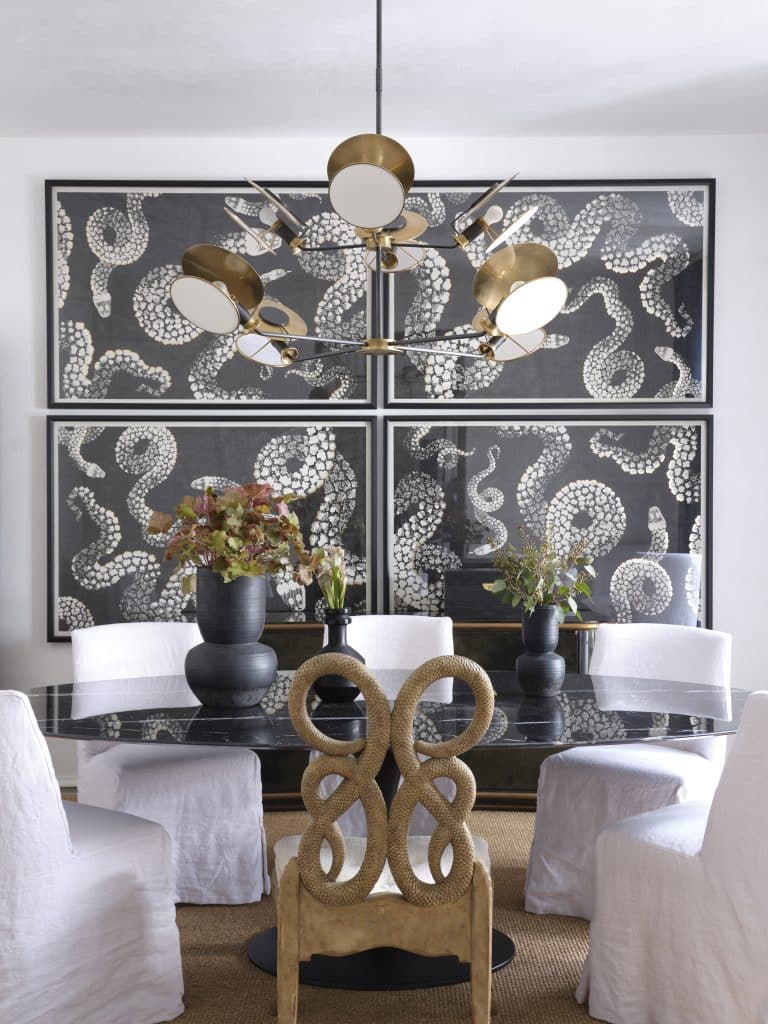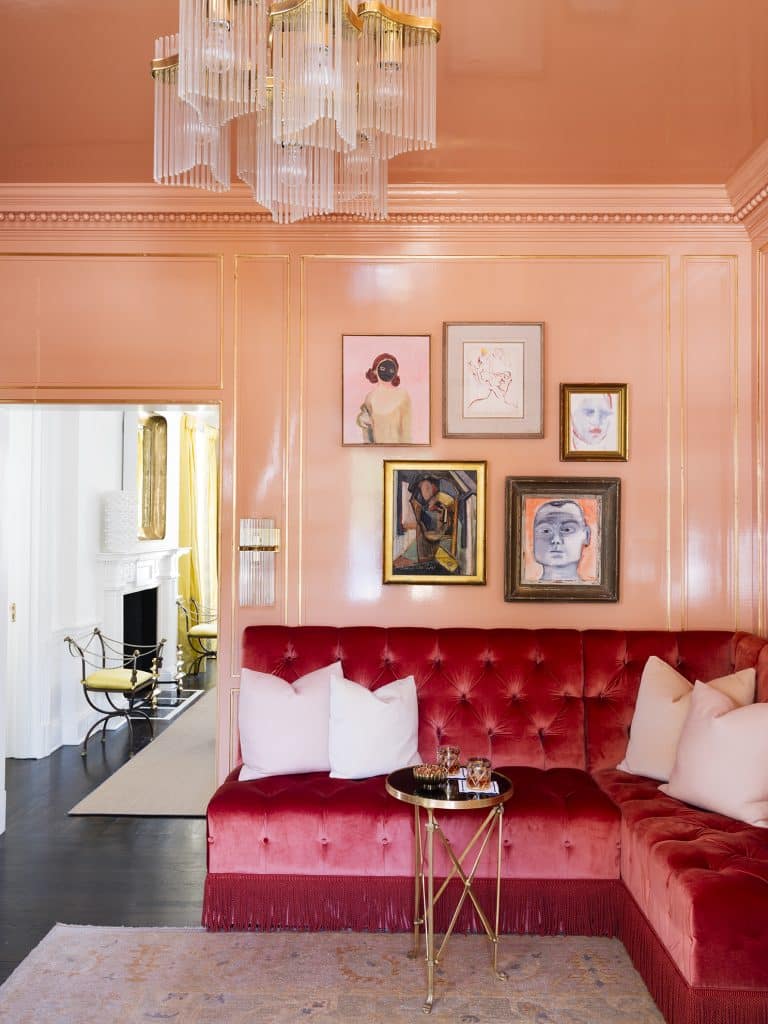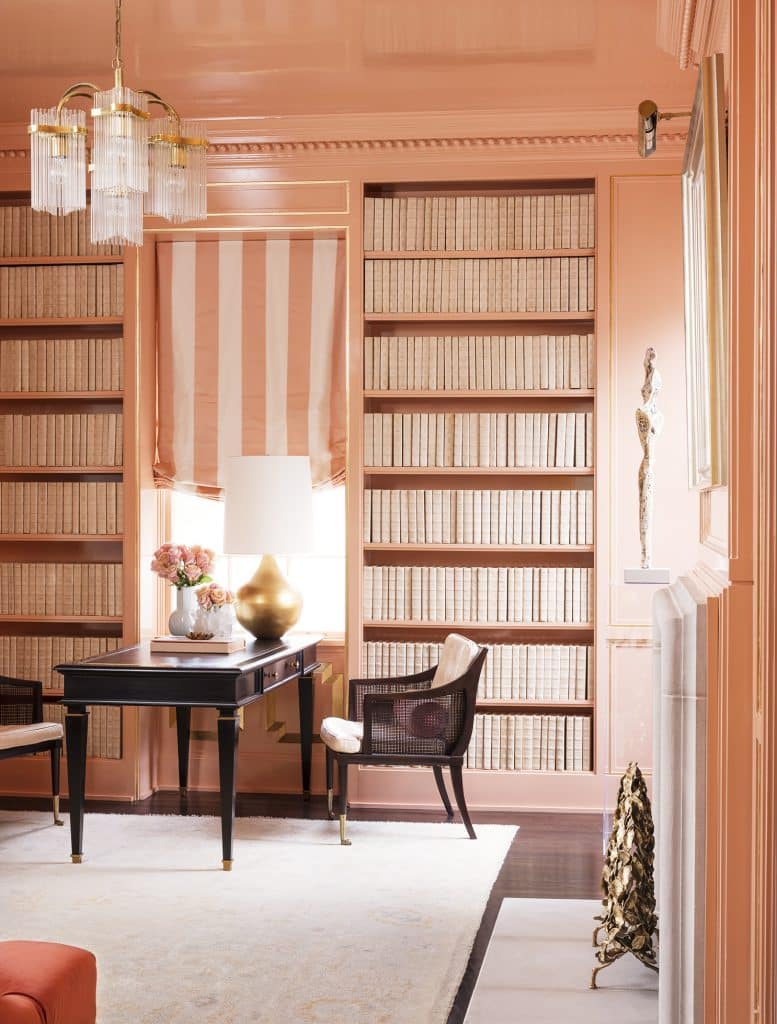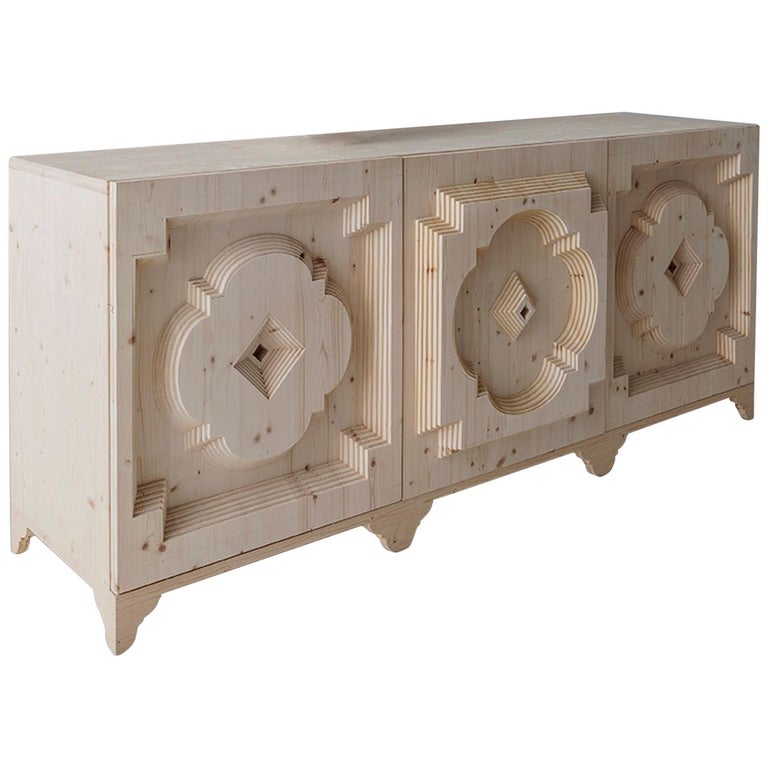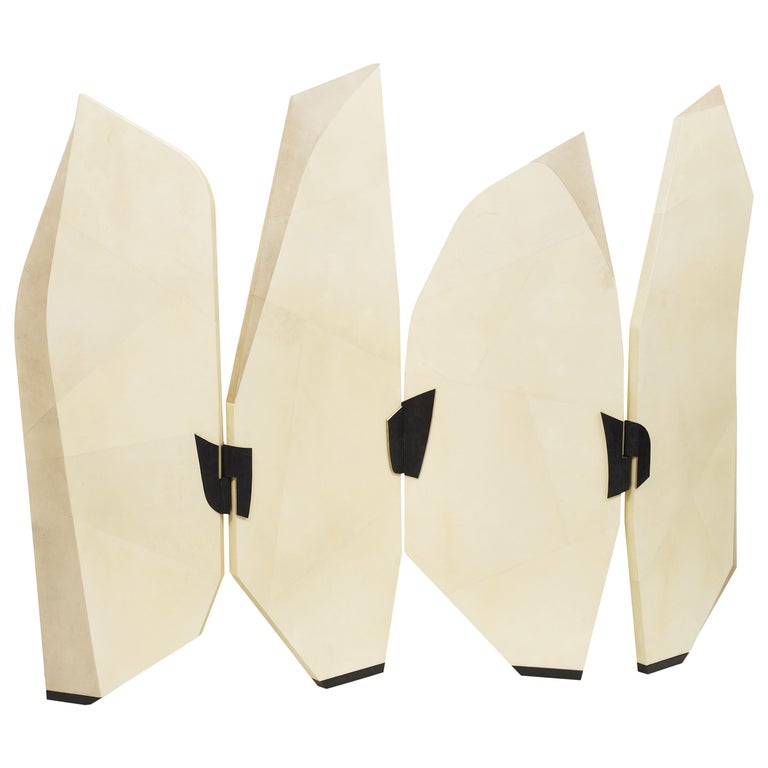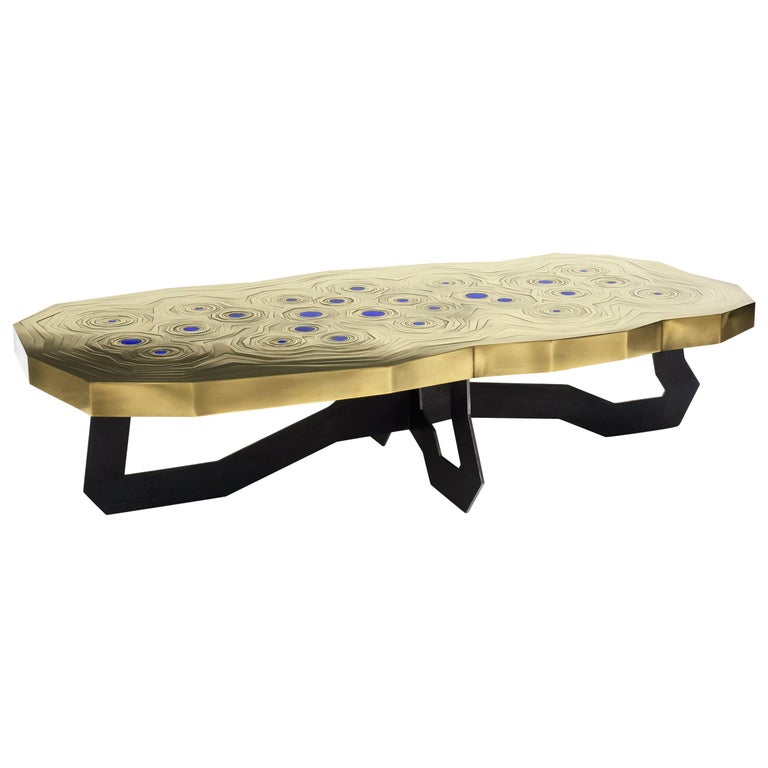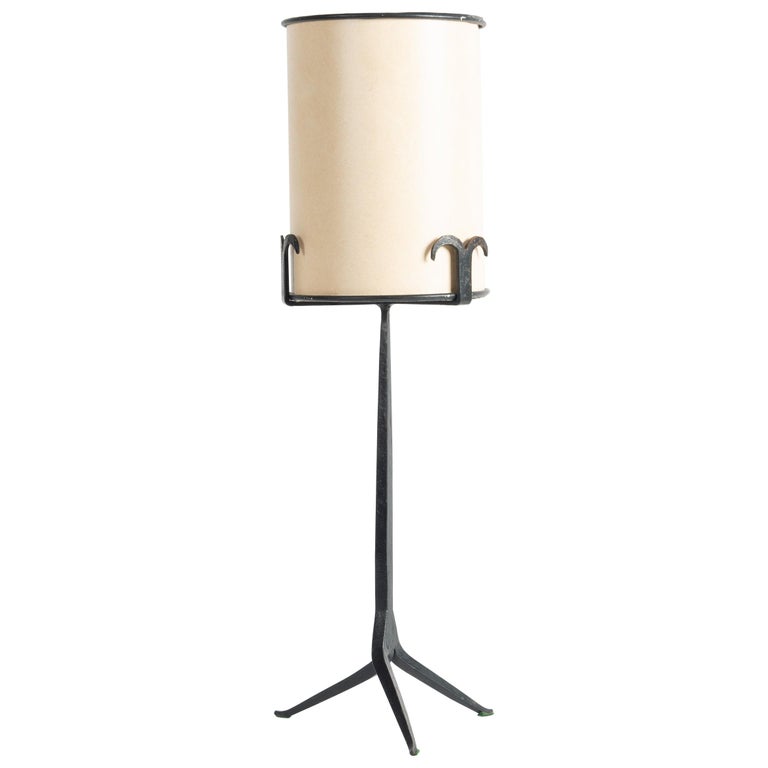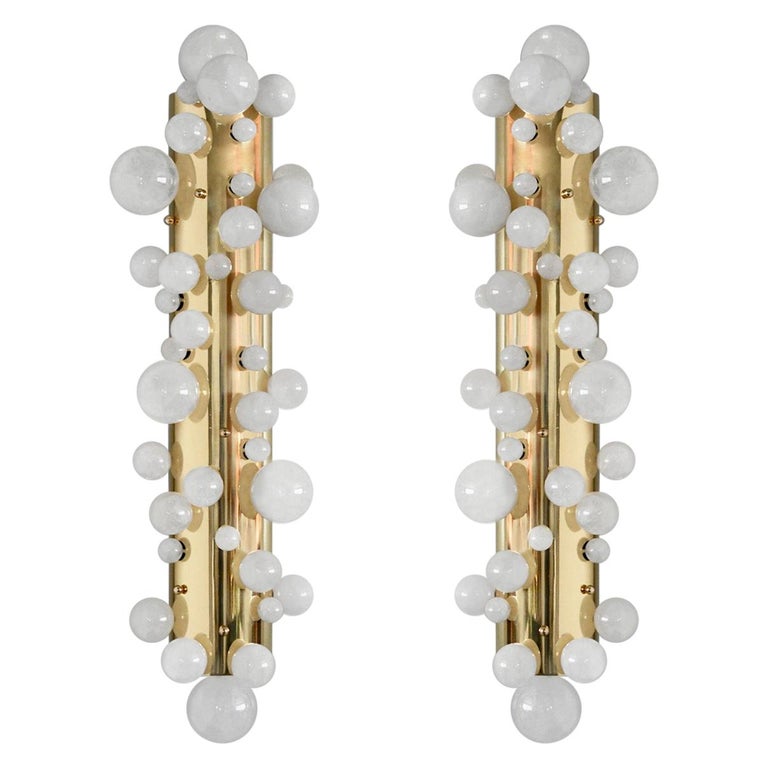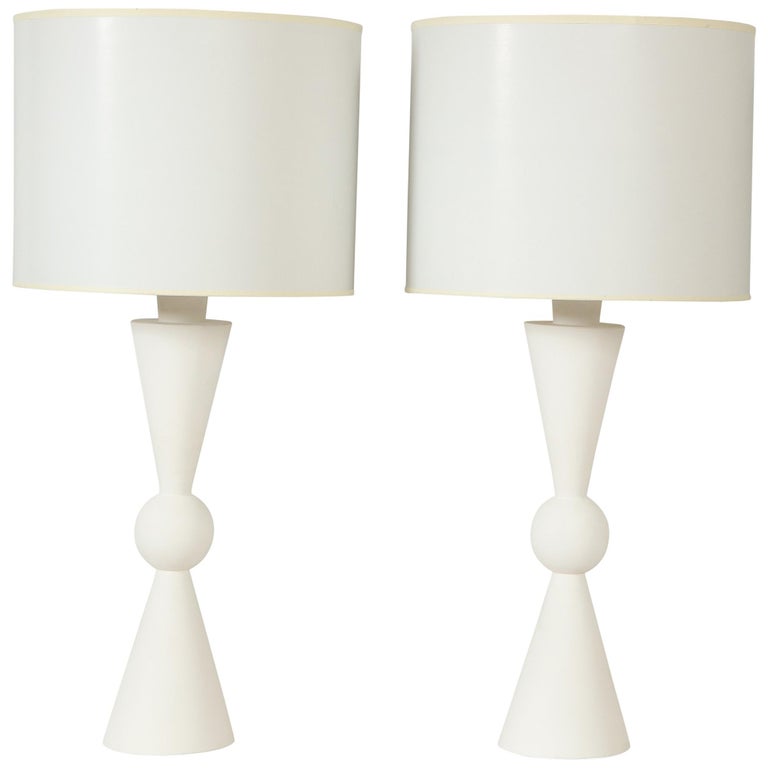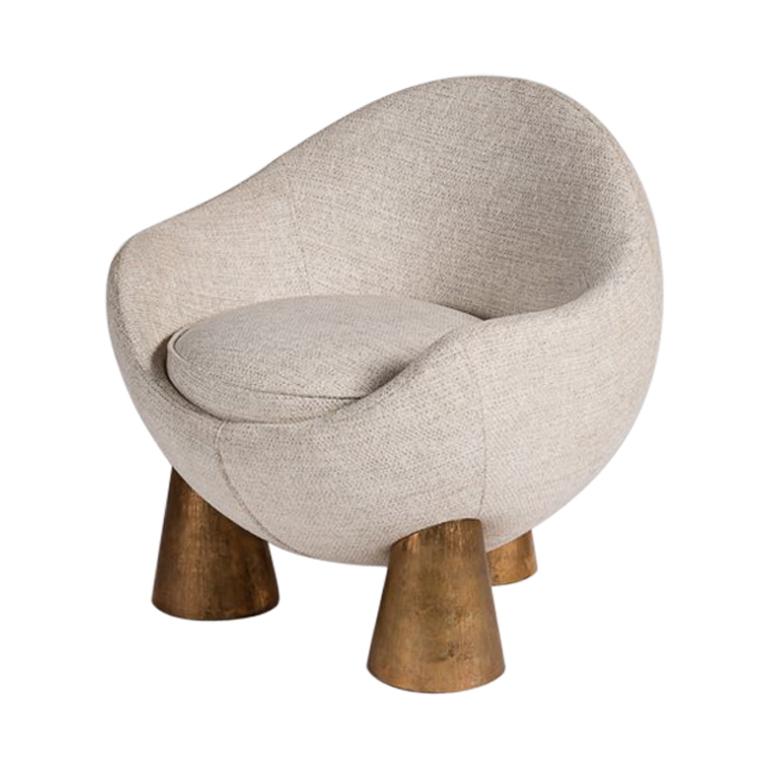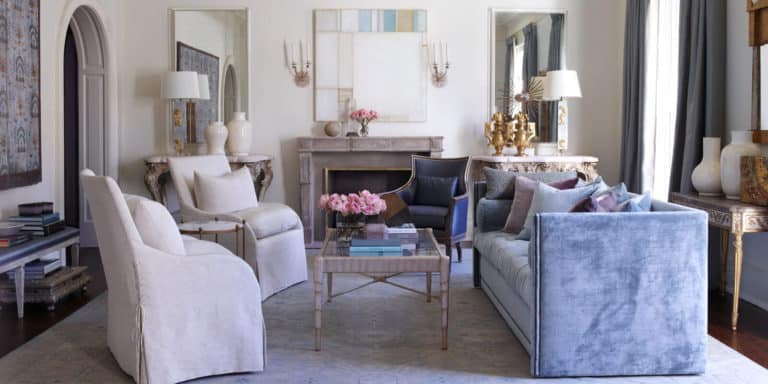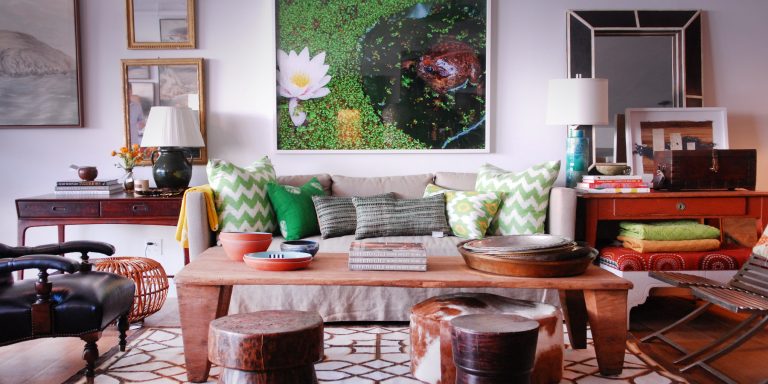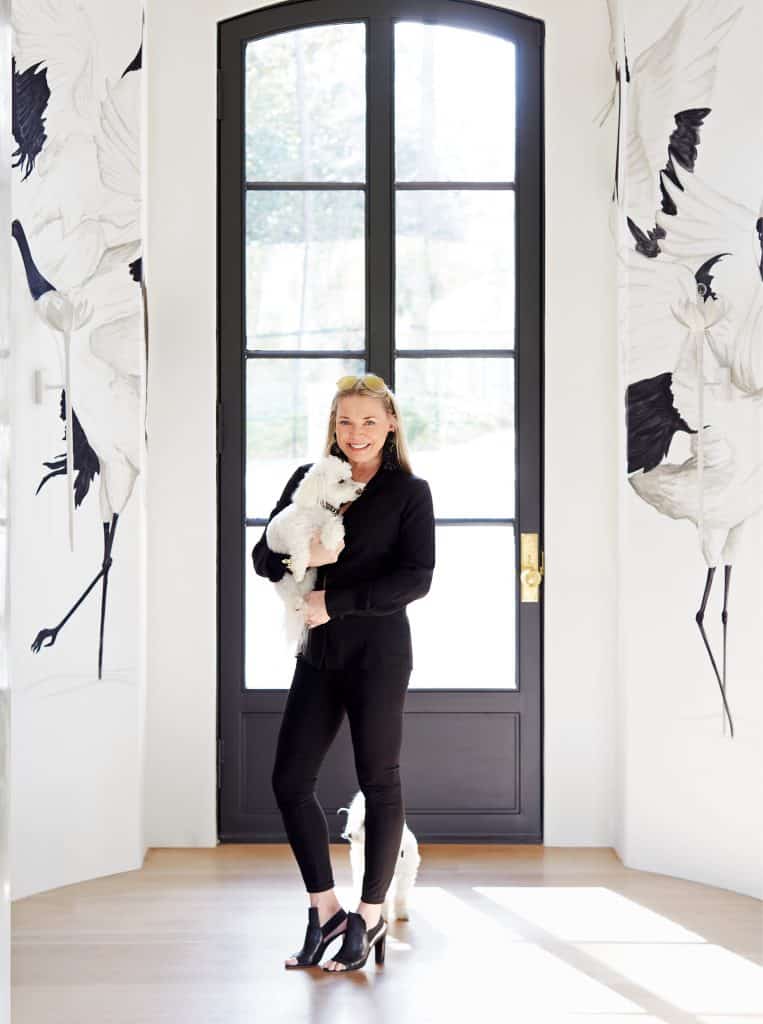
March 14, 2021“I am living the American dream,” says Melanie Turner, a Welsh-born designer who shares an Italian baroque–style Atlanta mansion known as the Pink Castle with her husband, their three grown children (all home because of COVID), a granddaughter and a menagerie of five dogs and an orange tabby.
Turner oversees a thriving design practice, known for its exuberant residential work. Her office is in a complex in the Buckhead neighborhood filled with interior designers.
With so many competitors in one building, it’s fair to ask her what makes her firm stand out. “First, we’re informal,” she explains. “Some of the designers around here are very fancy. I’m wearing jeans and a T-shirt — and I’m about to go meet a new client.”
Second, she says, “we share. We’re generous. When other designers ask us for advice, or for our sources, we don’t hesitate.”
That must be true, because in her new Rizzoli book, Inviting Interiors, Turner thanks — by name — the suppliers and workrooms she relies on. Many designers aren’t that forthcoming.
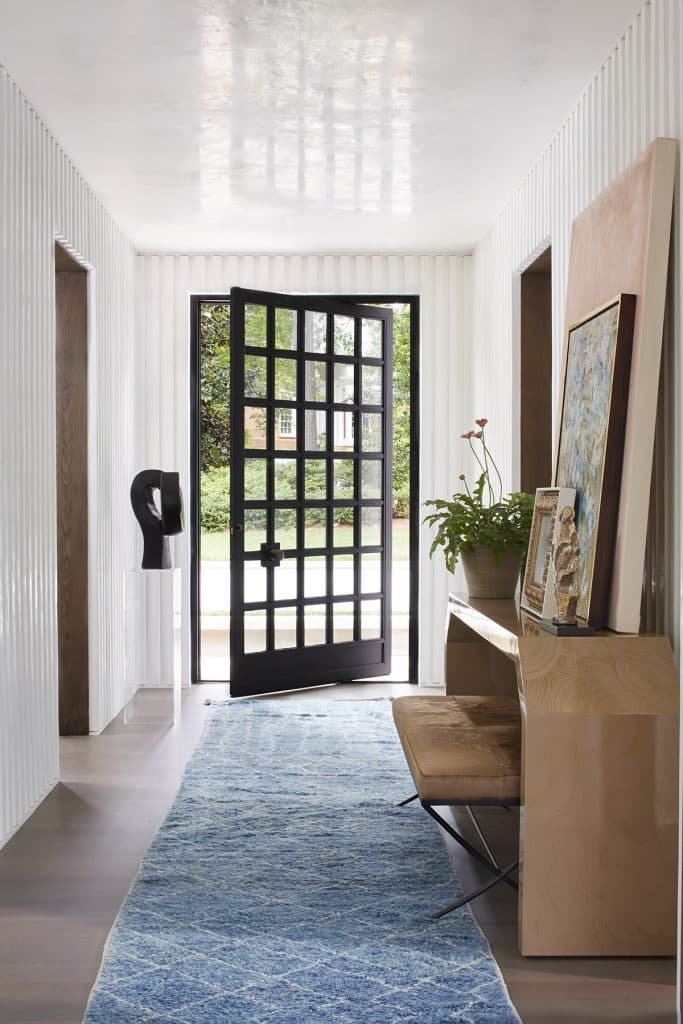
Turner doesn’t feel the need to keep her competitors guessing. “I know that even if they have all the same sources, our rooms will be different,” she says confidently. Of herself and her 10-person team, she adds, “I think we’re bold in our decision making. We’re fearless.”
Turner’s rooms do tend to look bolder than anybody else’s. The colors seem more saturated, the patterns more pronounced. True, she tends toward neutrals, but with a little wiggle room. “Blue is a neutral color,” she announces, explaining that, given the prevalence of blue in the world — “the sky is blue, if you’re a happy person” — she sees it as a kind of background color.
Blue appears in every room of the house Turner reinvented for empty nesters in Atlanta’s Tuxedo Park neighborhood. It “had previously been renovated for an owner with a penchant for hard surfaces,” she says. “My goal was to soften its edges.”
She started on this right inside the front door, where she had the walls swathed in Venetian plaster in a fluted pattern — a job so labor-intensive that each worker could cover only about a foot of wall per day, she says. On the floor, an antique Turkish rug adds history.
The living and dining rooms overflow with naturalistic forms, including a chair with a back consisting of carved wooden snakes, which is set beneath a quartet of snake prints. Elsewhere, benches on hooved legs from Oly Studio flank a mirror-clad center table with a hexagonal base near leather-wrapped side chairs from Baker. “Repetition of form on disparate objects helps to unify a room,” Turner writes in the book. That’s especially clear in the breakfast area, where Warren Platner chairs surround a Julian Chichester dining table, creating a coterie of pieces with cylindrical metal bases.
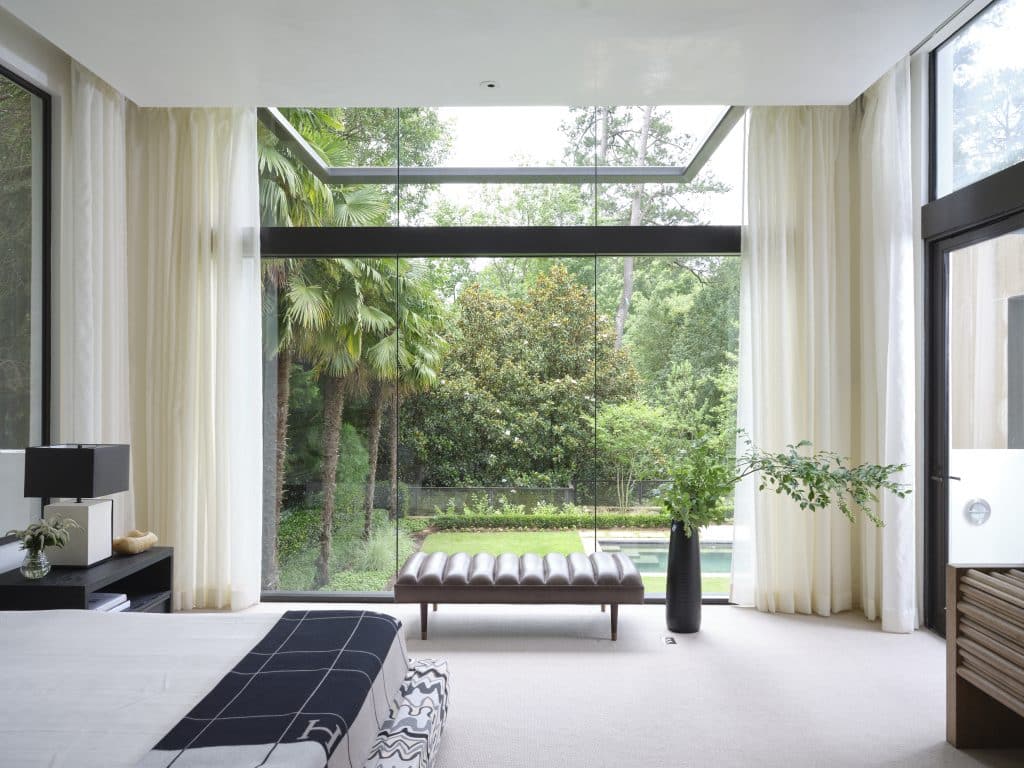
The main bedroom, a 26-foot square with 12-foot ceilings, could have felt like a fish tank, but Turner softened its glass walls with flowing drapes and its floor with plush wall-to-wall carpeting. The bed itself is upholstered in a jazzy pattern. But the room is also filled with black rectangles — a chiaroscuro painting of a rabbit in an Elizabethan collar, a pair of pillows on the bed, the shade on a Baker table lamp atop a geometric nightstand. Between the softness and the blackness, Turner’s scheme seems to embody contradiction. “All of our spaces have a tension between masculinity and femininity, which is why people feel comfortable in them,” she says.
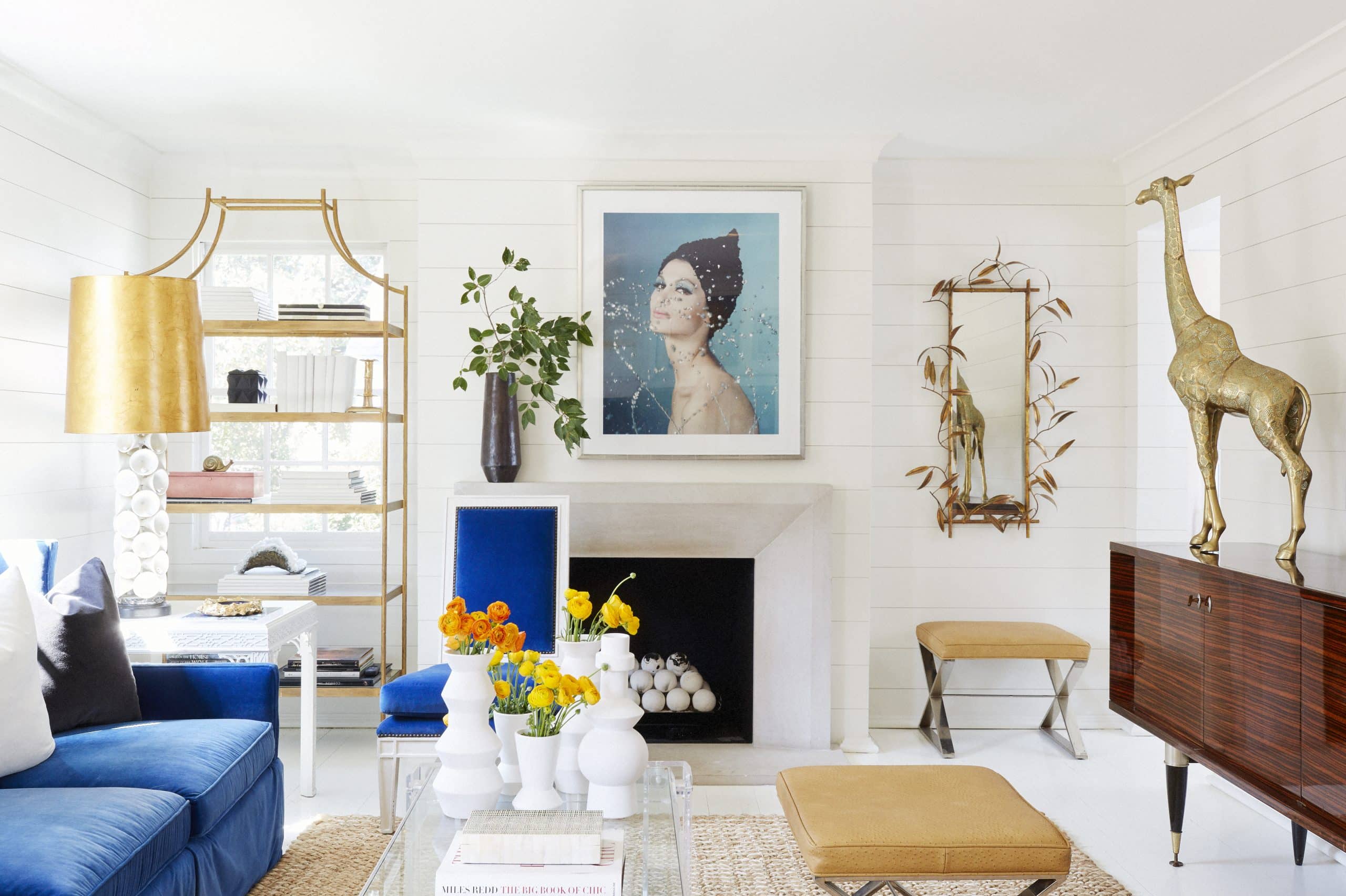
Another client, a woman the designer describes as “a high-spirited, fashion-forward millennial,” asked Turner to decorate her starter home in Buckhead. Turner covered the main room’s original Sheetrock walls with shiplap. Then, she and the client — her youngest ever — went shopping, bringing home a playful mix of pieces that includes a Kelly Wearstler Cubist chandelier, a pair of red Chippendale end tables (which Turner painted white) and an antique brass giraffe.
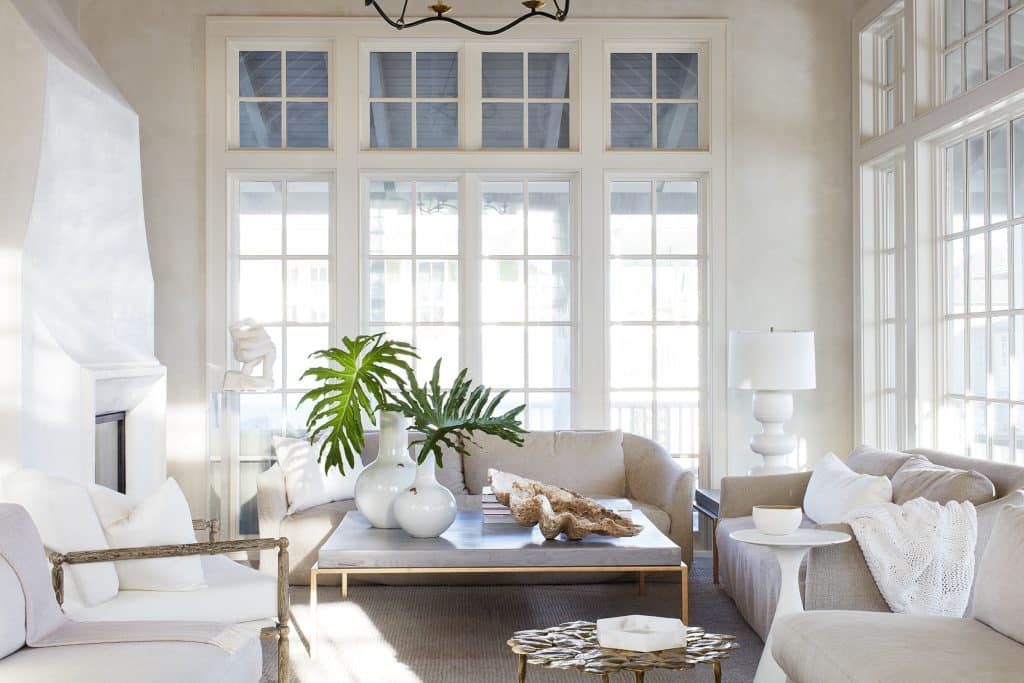
Many of Turner’s projects are second homes. When a family from Oxford, Mississippi, bought a house in Rosemary Beach (on the Florida Panhandle, near Seaside), the interior was entirely brown — walls, floors and ceilings. “Most people, when they go to the beach, want simplicity and calm,” Turner says. So, she lightened things up, a job that included turning a hearthless fireplace into a sculptural tower of white plaster. Chairs by Julian Chichester and Lee Industries, positioned in front of a Bradley USA coffee table, are all predominantly white.
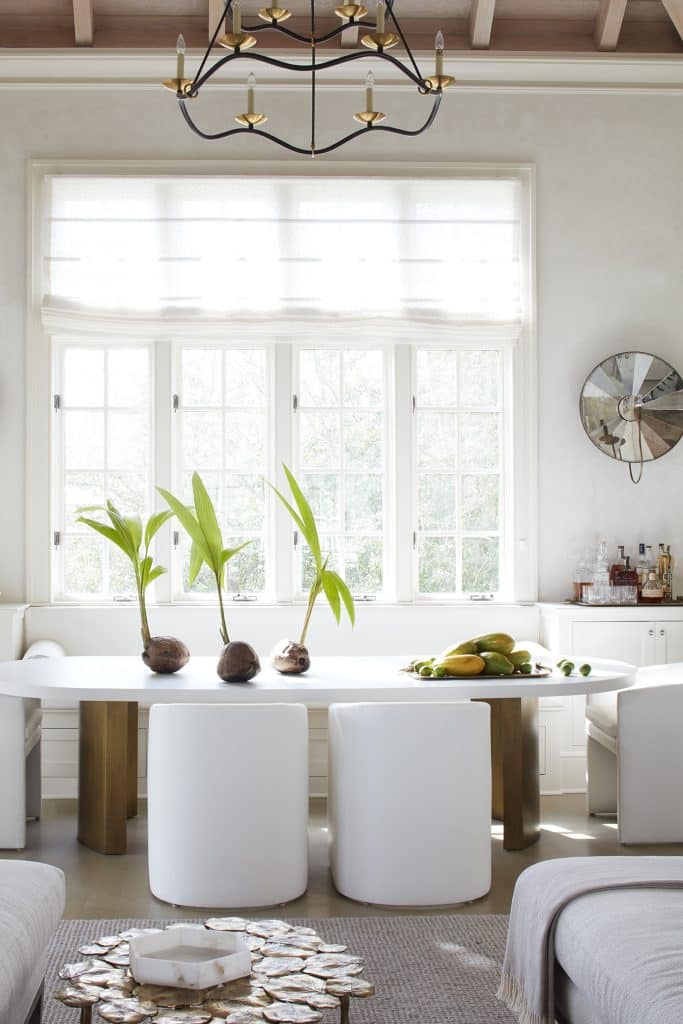
The house’s other defining characteristic, besides its brownness, was the squareness of its rooms. Turner decided to temper its right angles with copious curves. She designed the large racetrack-shaped dining table, as well as the chairs around it (“We couldn’t find tub chairs on casters”). And she added curvy accessories like the candle reflector that hangs above the kitchen counter.
She turned one of the four bedrooms into a media room, furnished with what she calls “man chairs,” which are almost wide enough for two. And she “engulfed the space with linen,” she says, referring to the drapes, which can darken the room even on a bright Florida afternoon. But because the couple has a huge Great Dane, a lot of the house’s upholstery is vinyl. “You can Windex it,” she says, displaying a practicality she attributes to her Welsh forebears.
“I know that even if other designers have all the same sources, our rooms will be different,” says Turner. “We’re bold in our decision making. We’re fearless.”
Turner’s mother, a hairdresser “with a great sense of style,” and her father, a “hippie businessman,” brought her to the States on the Queen Mary in the late 1960s. (She remembers playing shuffleboard and eating Smarties, a British candy similar to M&Ms, on deck.) The family settled near Tampa. Turner says she grew up “in a real Welsh household — with a Welsh father, a Welsh mother and even a Welsh terrier.”
She wanted to be an artist, and she had planned to study in New York, but when she was 18, her father died in a car crash. She decided to stay close to home: “The thought of being a young carefree person on a college campus was gone.”
So, she attended Georgia State, where she majored in design, then married Atlanta-based homebuilder Stan Benecki. For years, her main occupation was raising their three children, but she also designed interiors for some of the houses her husband constructed.
pink hue.” The chandelier, desk and chair here are all from 1stDibs — a design destination Turner loves because the site “makes it easy to shop from my desk chair.”
She also designed the interiors of her family’s own home. When she was finished, her husband dared her to enter a local design contest. She took the dare, and after sending photographs of the house to the awards committee, she submitted the same images to Veranda. To her surprise, she ended up winning the top residential prize, and the house ended up on the cover of the magazine.
She figured it was time to set up a design firm, which she called Melanie Turner Interiors (using her maiden name). She borrowed office space from her husband and used a folding card table for furniture. But as soon as she got a phone, it started ringing. “It’s the opposite of how most firms start out,” she says. “We had national publicity before we had a paying client.”
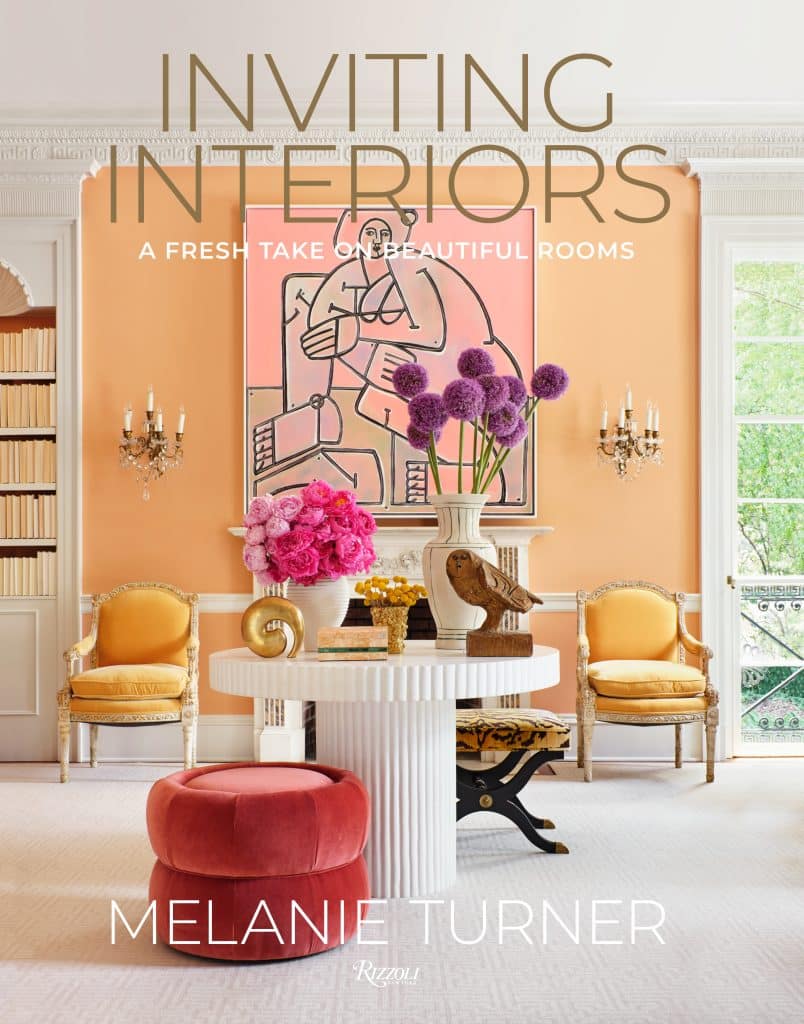
These days, about half her projects are in the Atlanta area; the other half are scattered around the U.S., with a cluster in Big Sky, Montana, a place she has been visiting since she was in her 20s. She and a partner own a design shop there called Melanie Turner Home + Interiors. She and Benecki also own a vacation home on the Panhandle, near many of her clients.
For all the luxury in her life, Turner has remained true to principles of economy. A room, ideally, should be used for more than one purpose. And things shouldn’t be wasted. “If a client is putting in a new kitchen,” she says, “the old one should go to Habitat for Humanity or a similar organization.”
Her clients often say they want their houses to be “modern but warm.” But which kind of modern, Turner wonders. “There’s Art Deco modern, there’s International Style modern and Arts & Crafts modern.” Sometimes, she says, “I show them pictures and ask them, ‘What’s modern to you?’ ”
The one thing she’s sure of: She’s modern, which to her means using pieces from the past and present in surprising juxtapositions. “Modern,” she says, “is about more than just white paint.”
